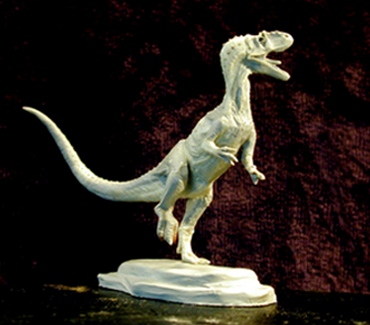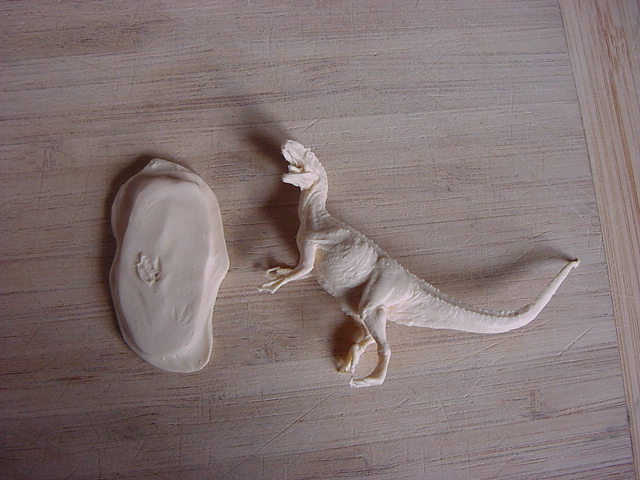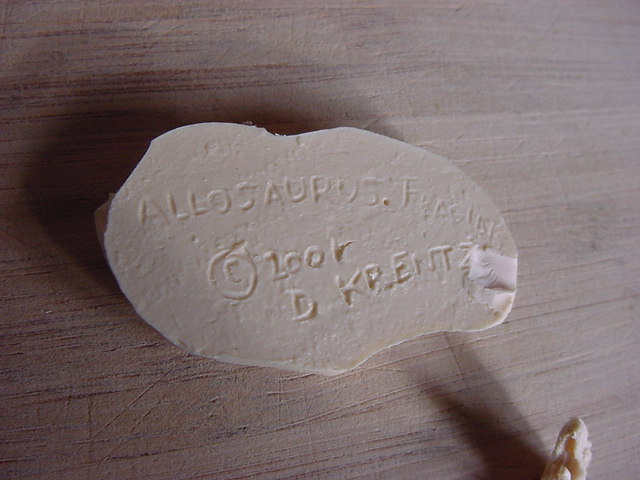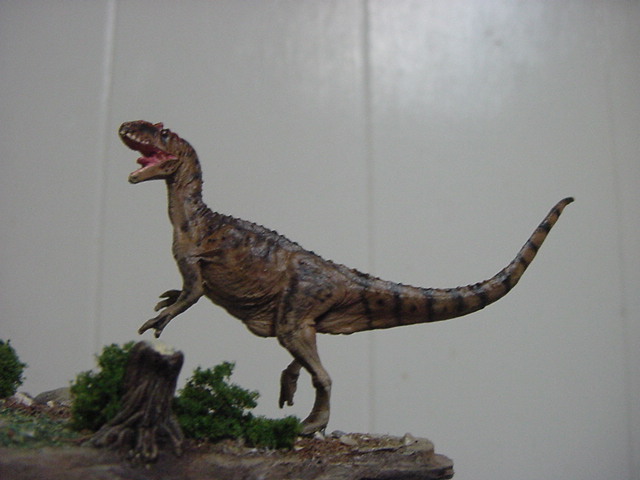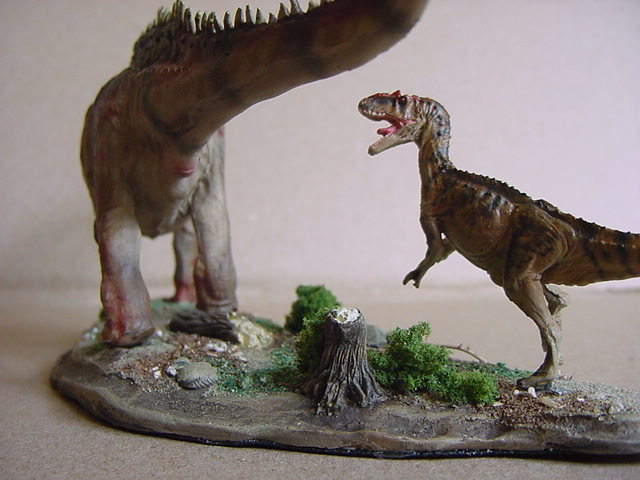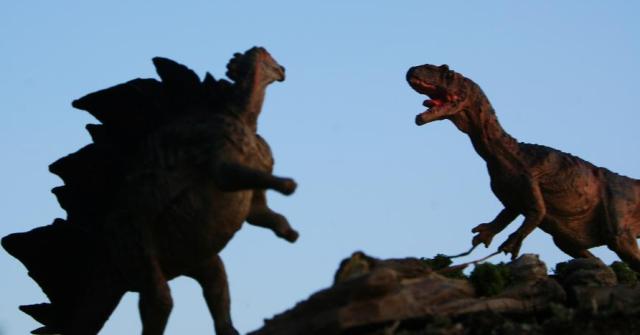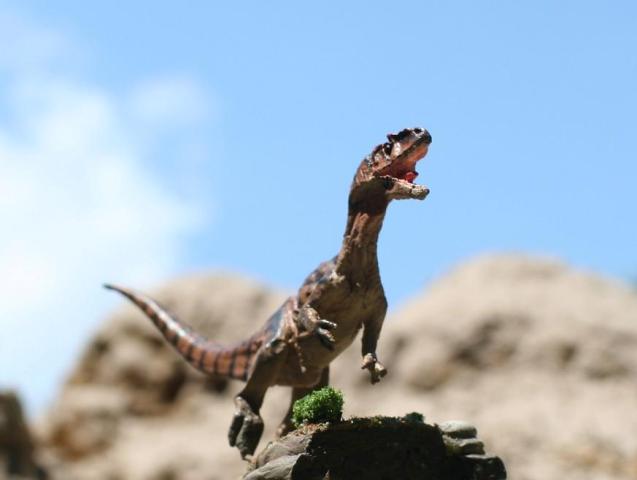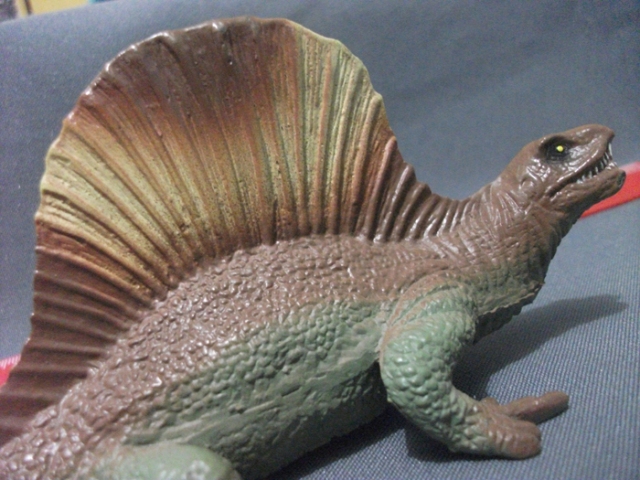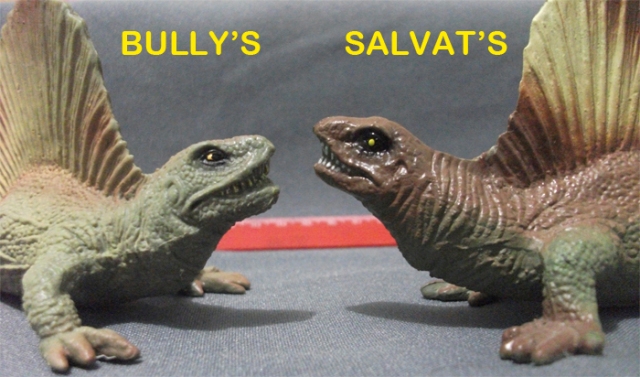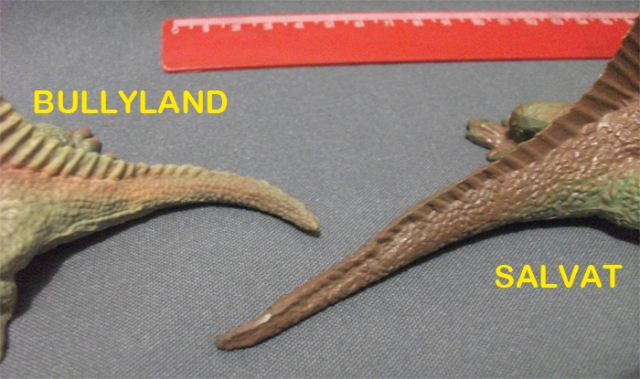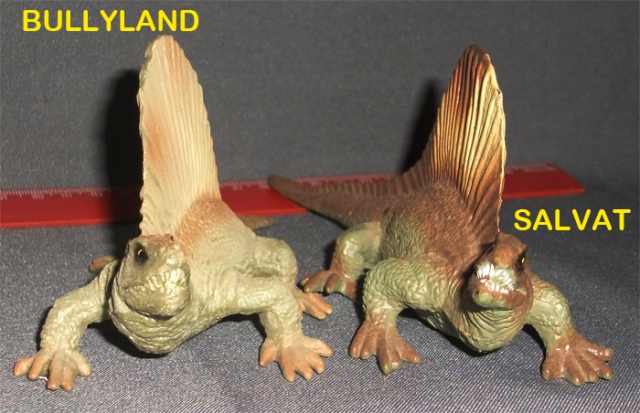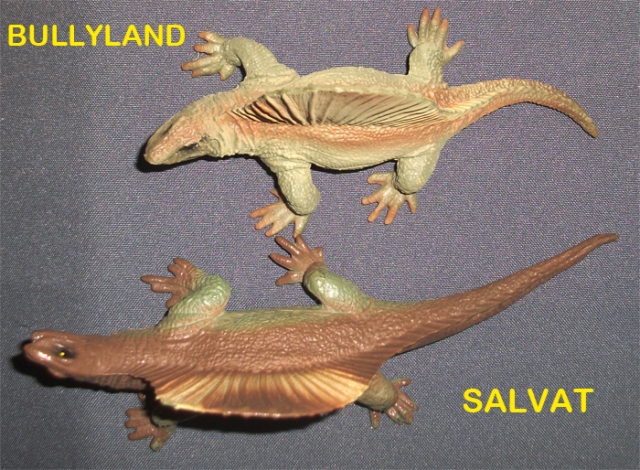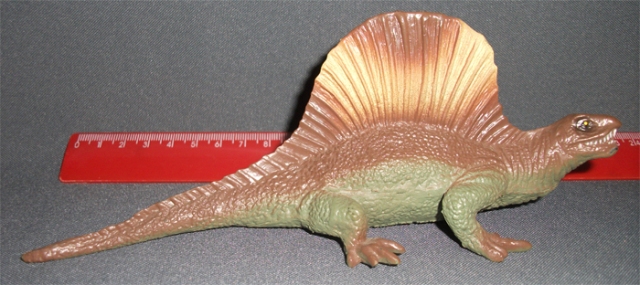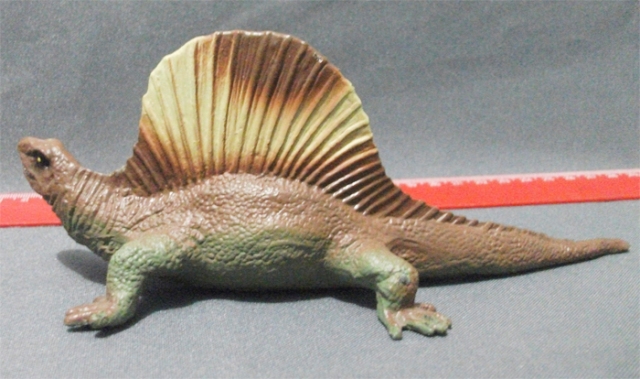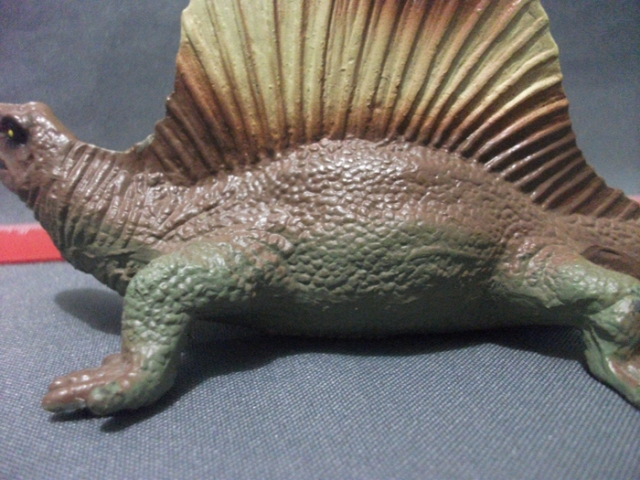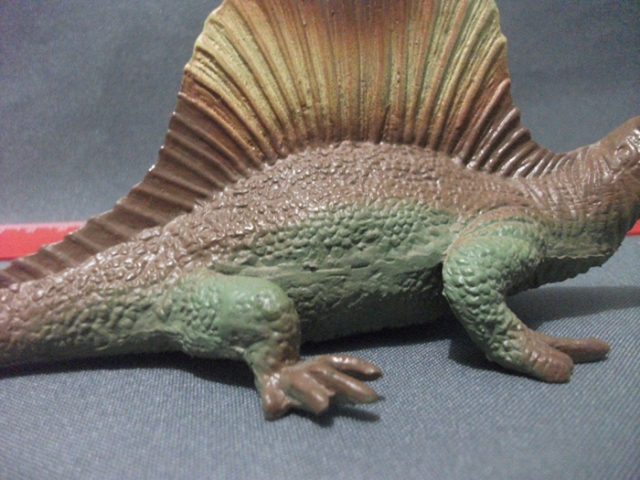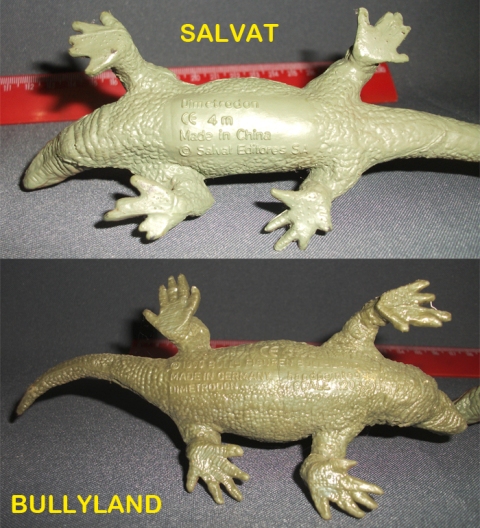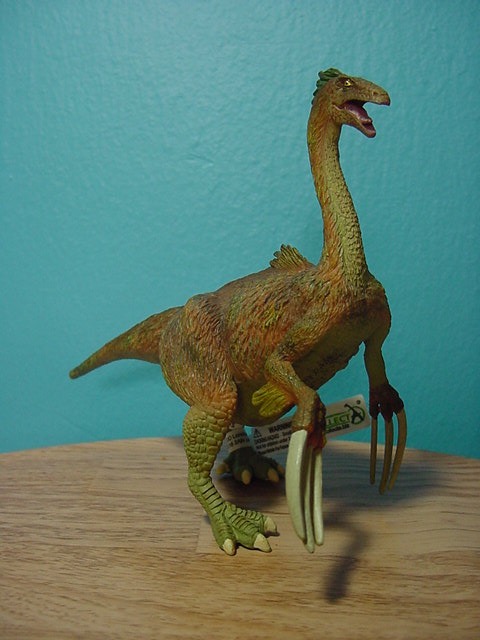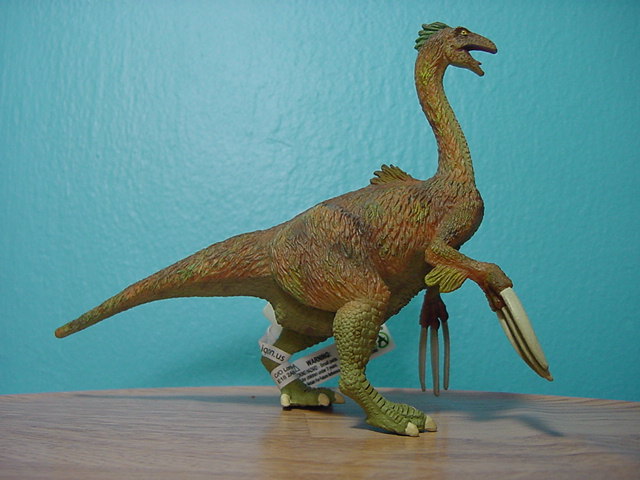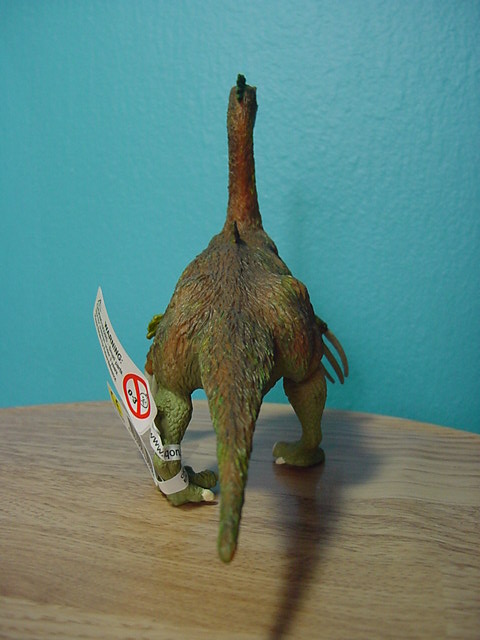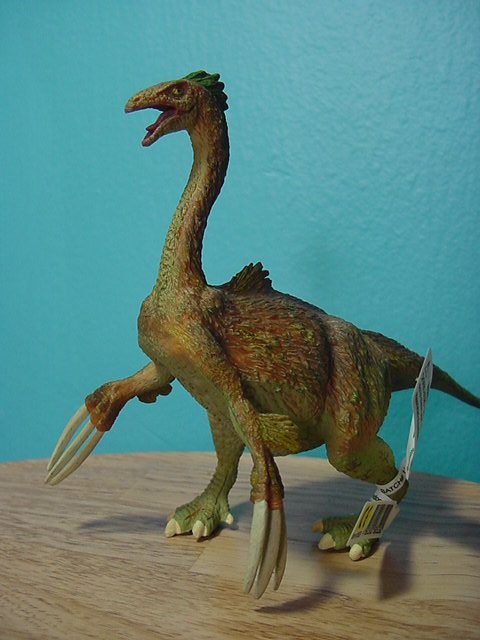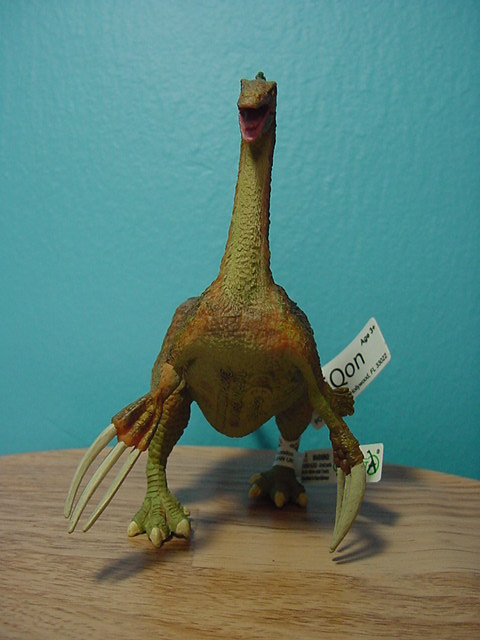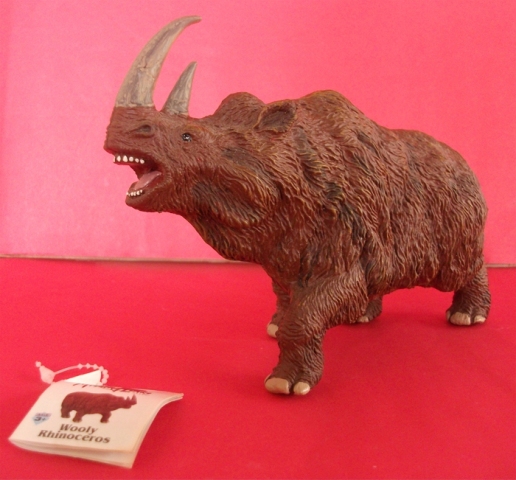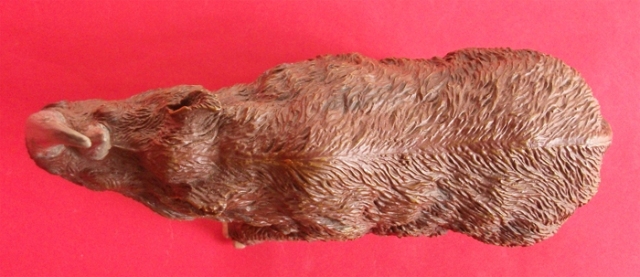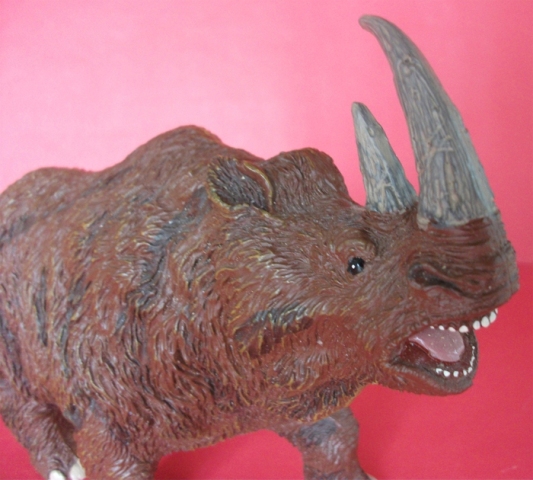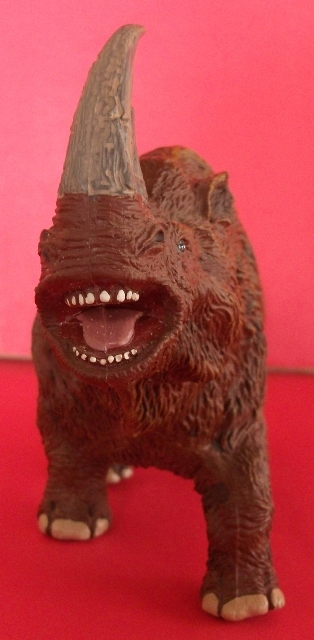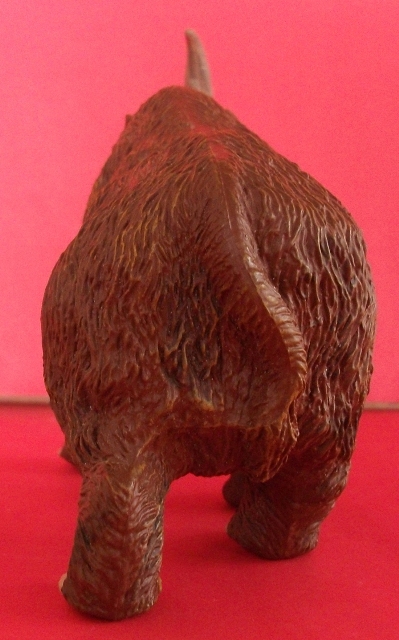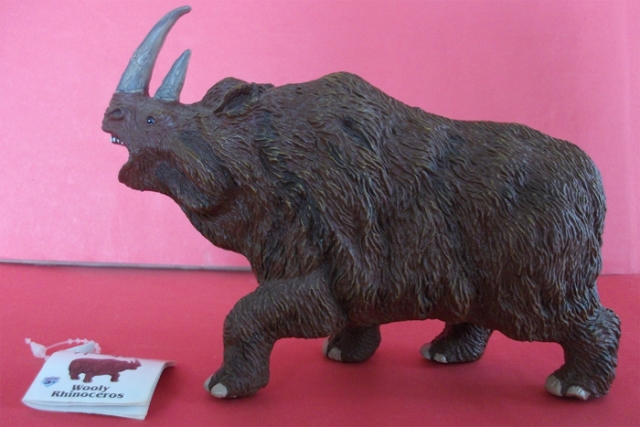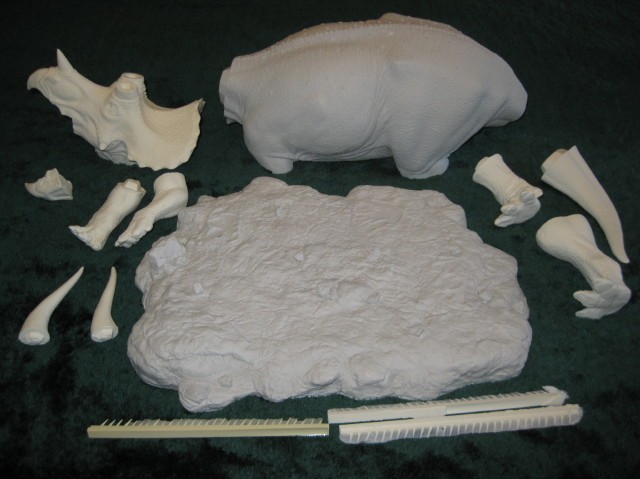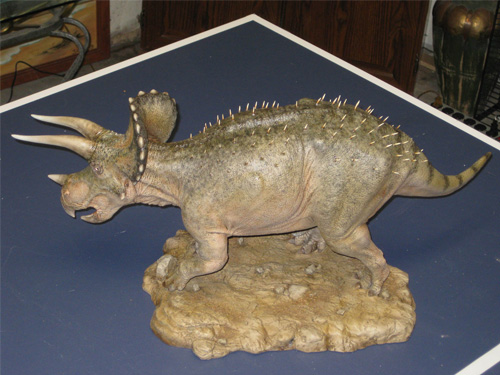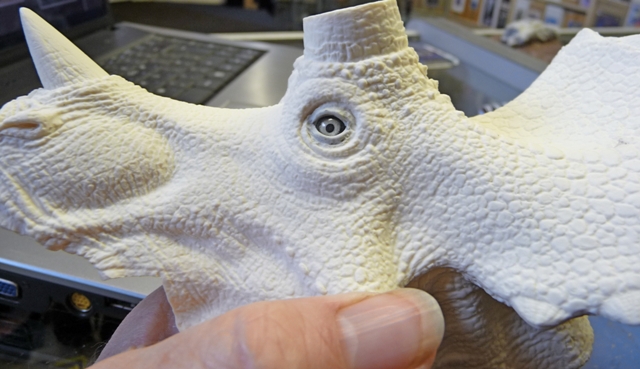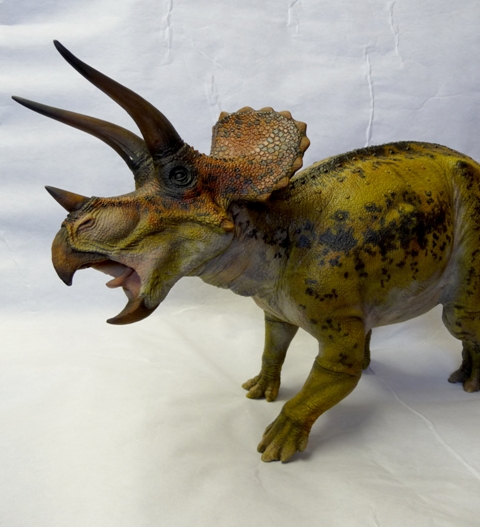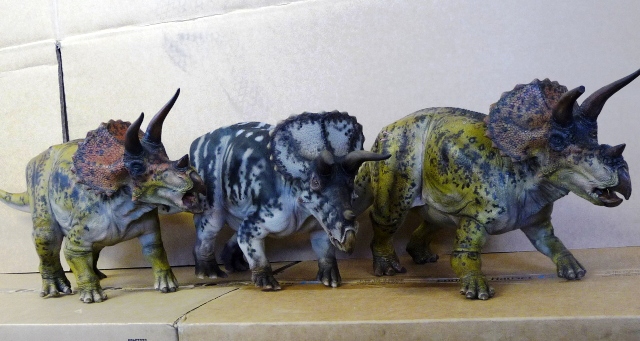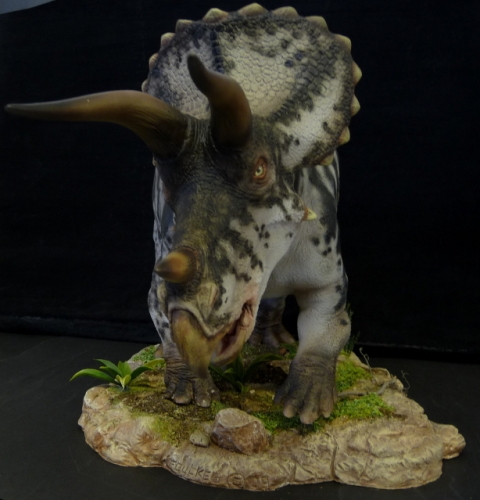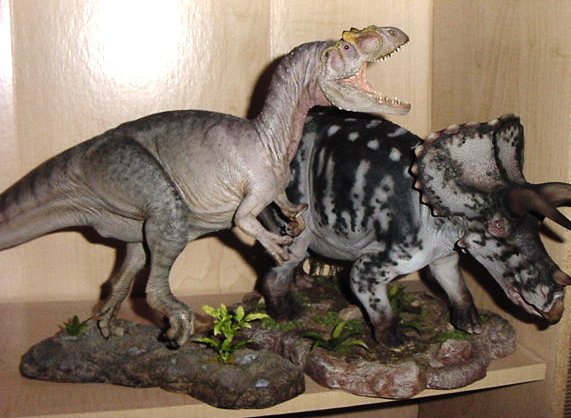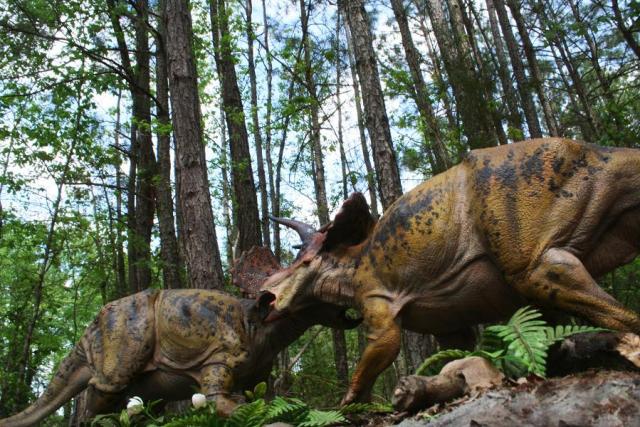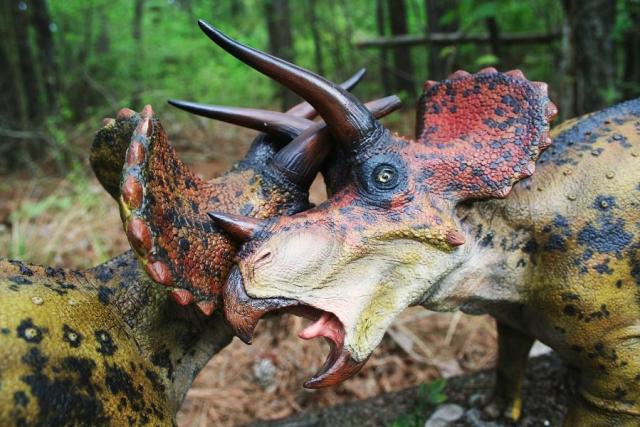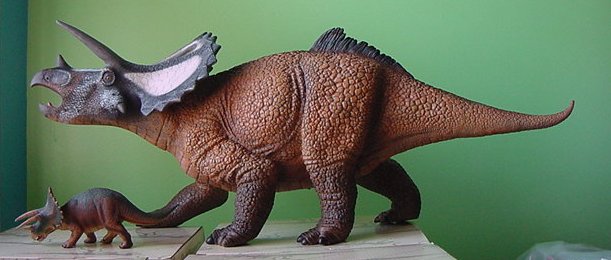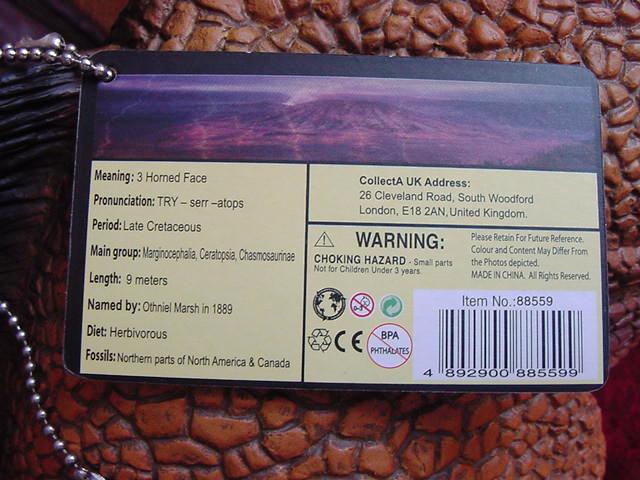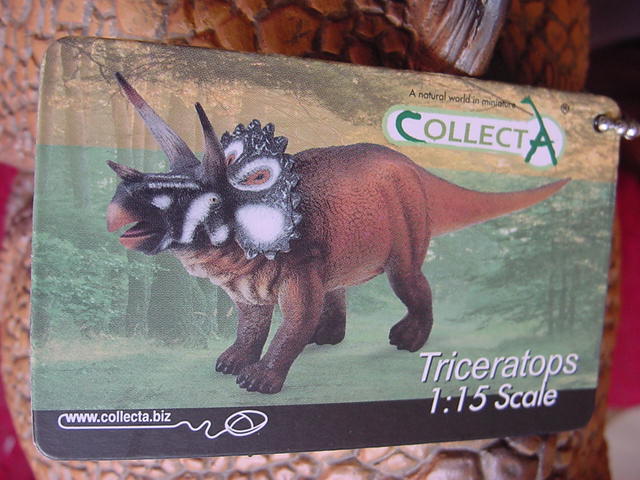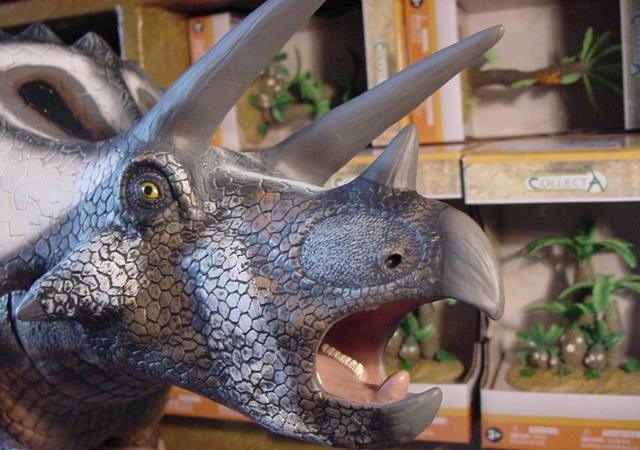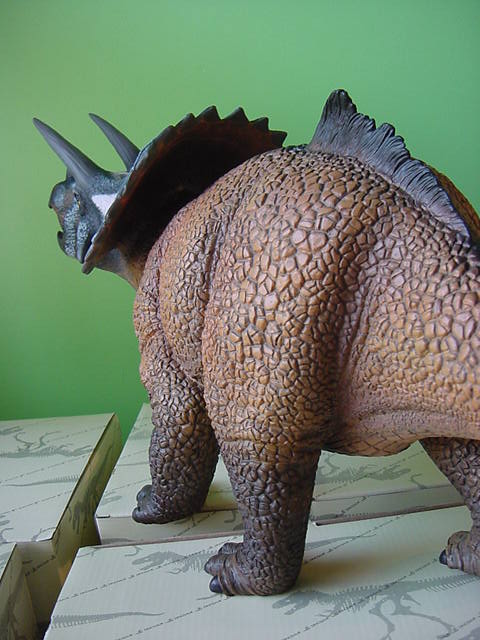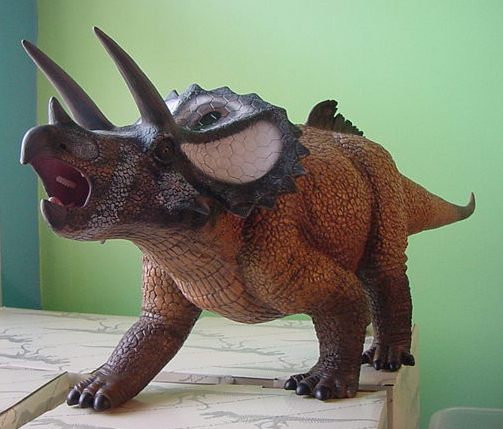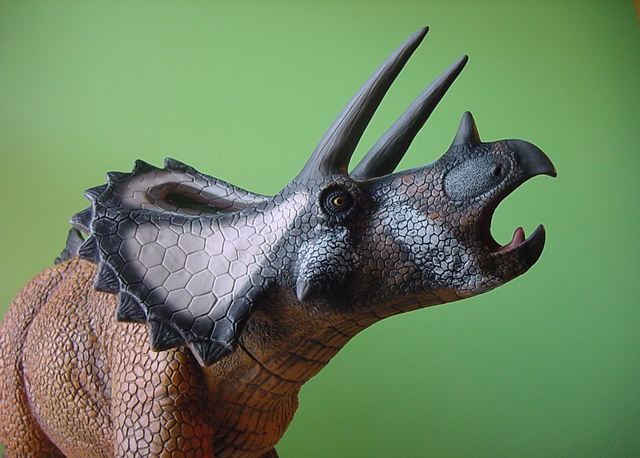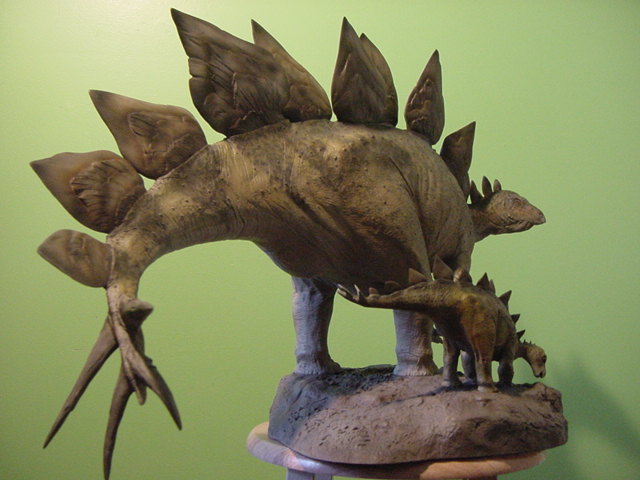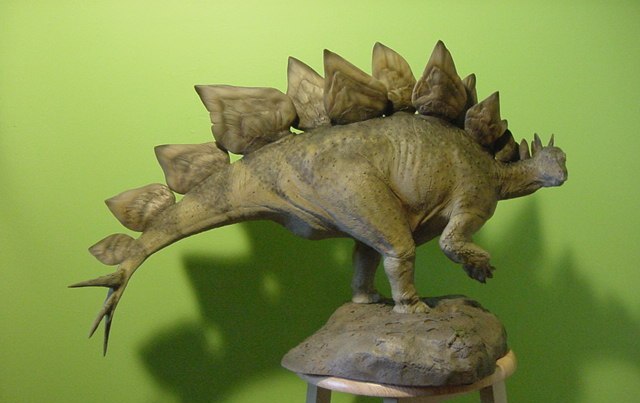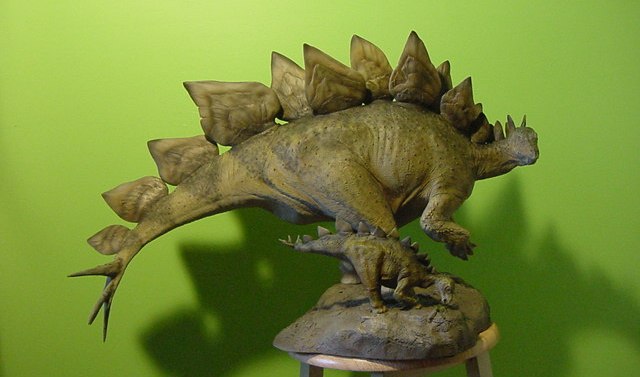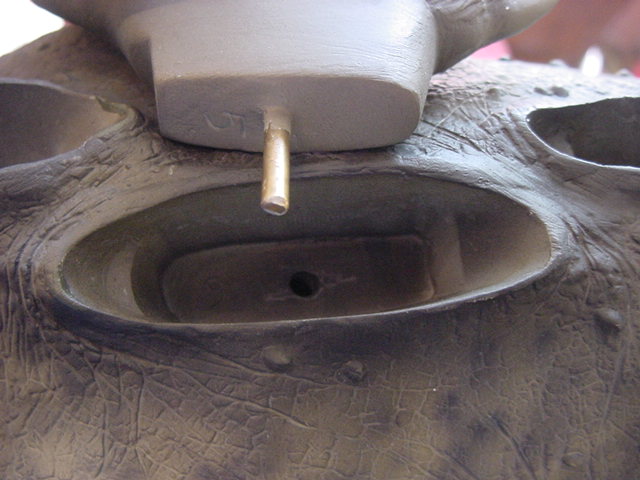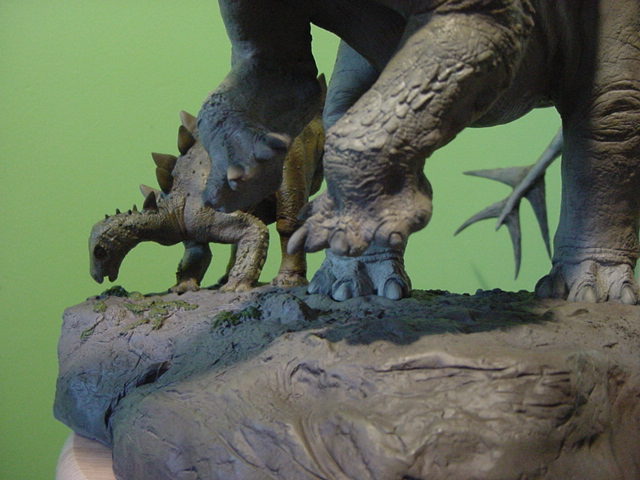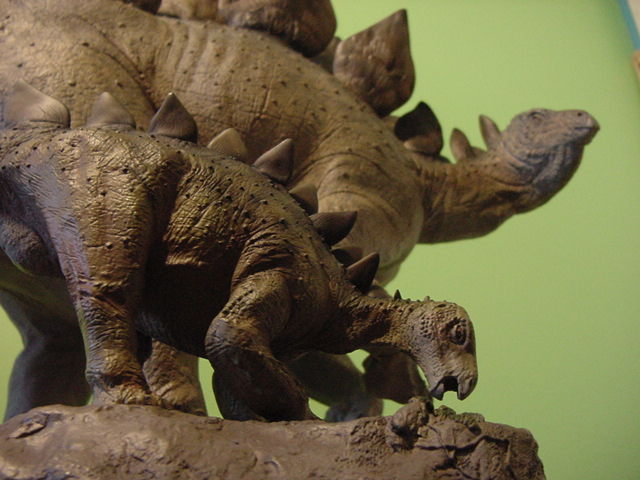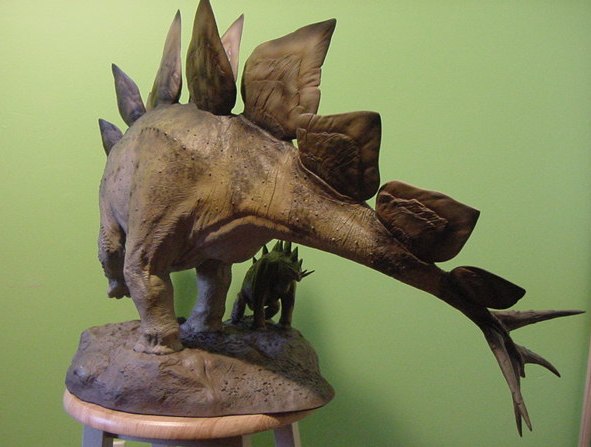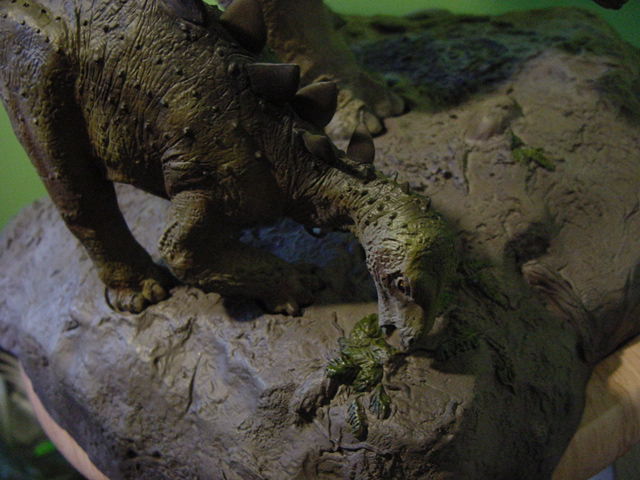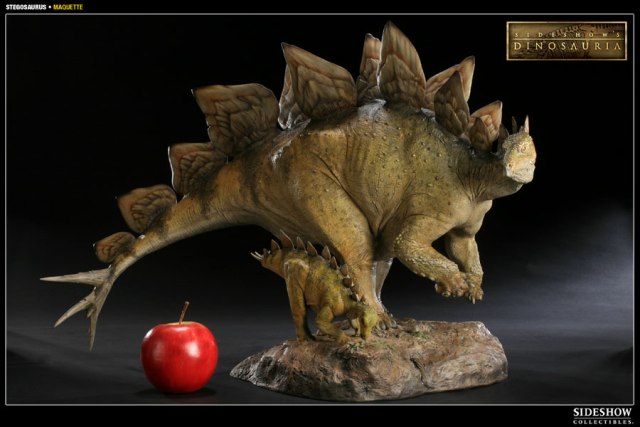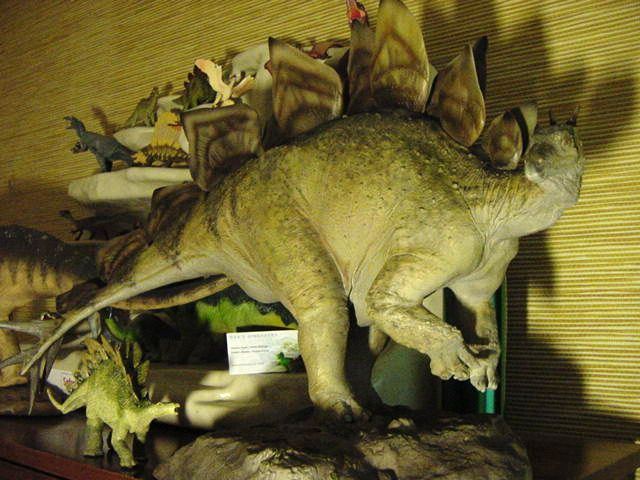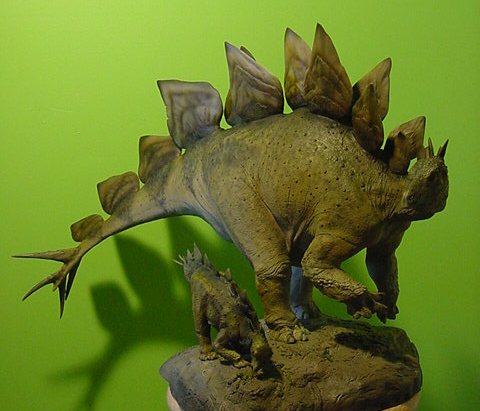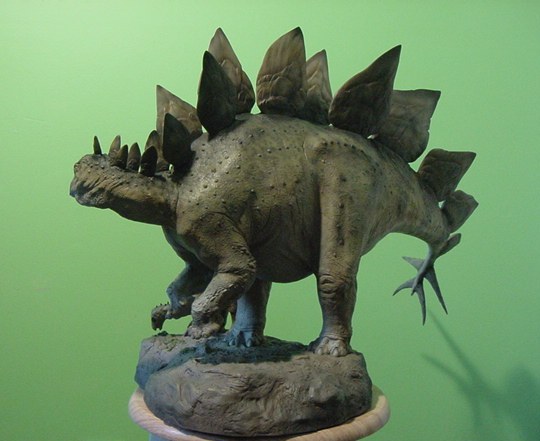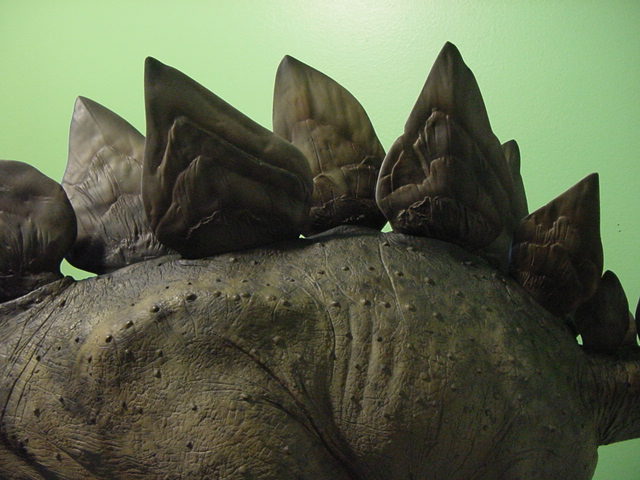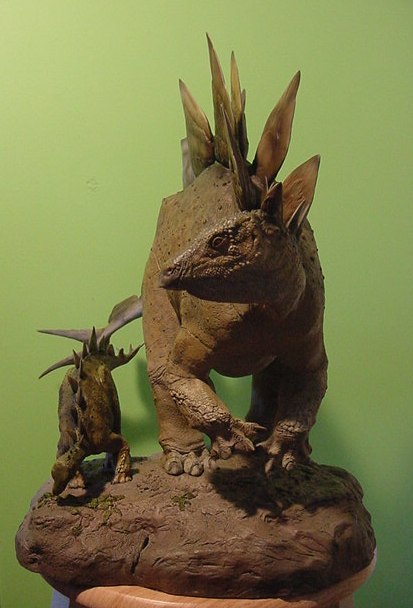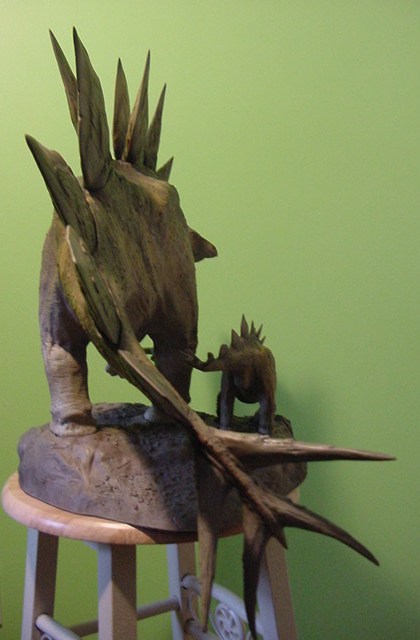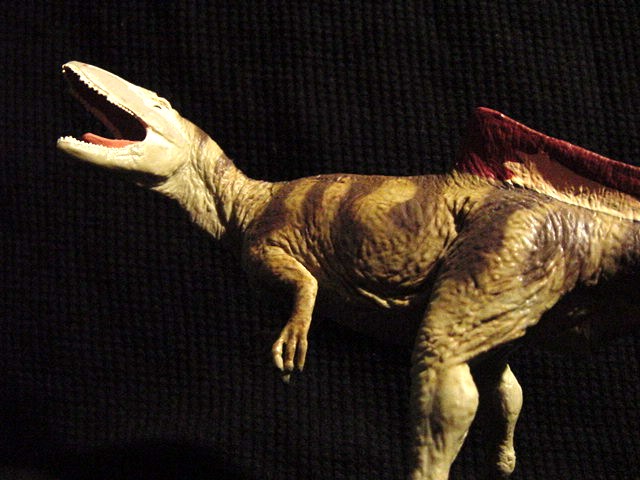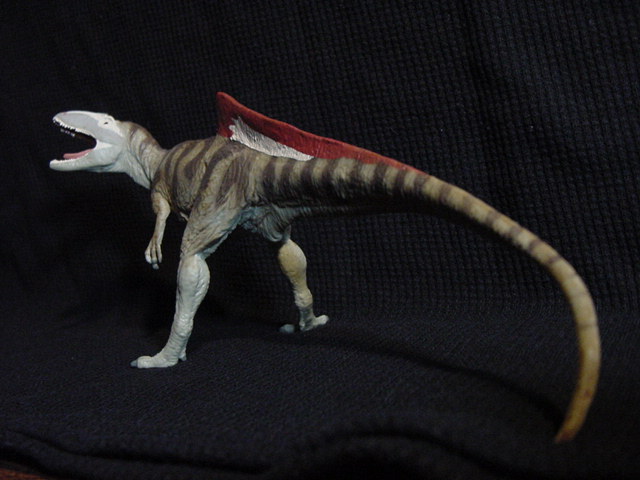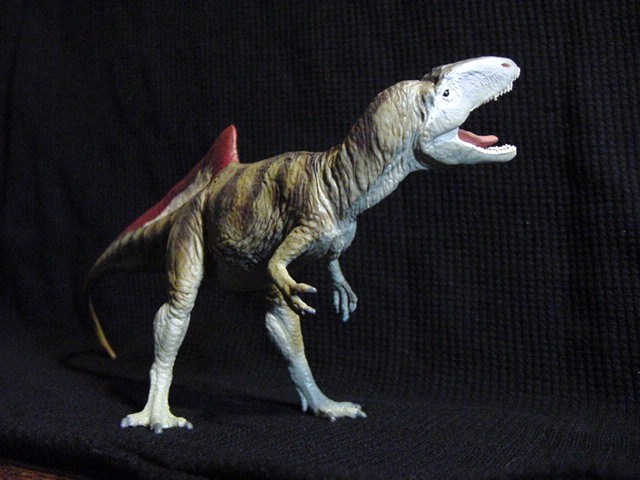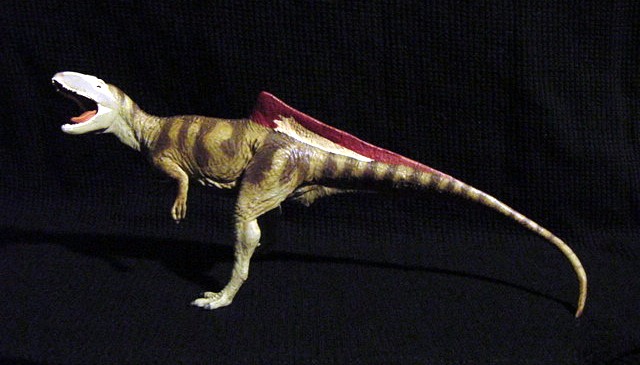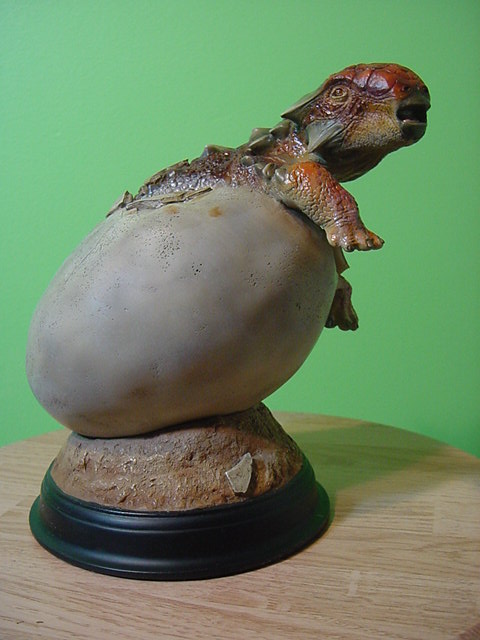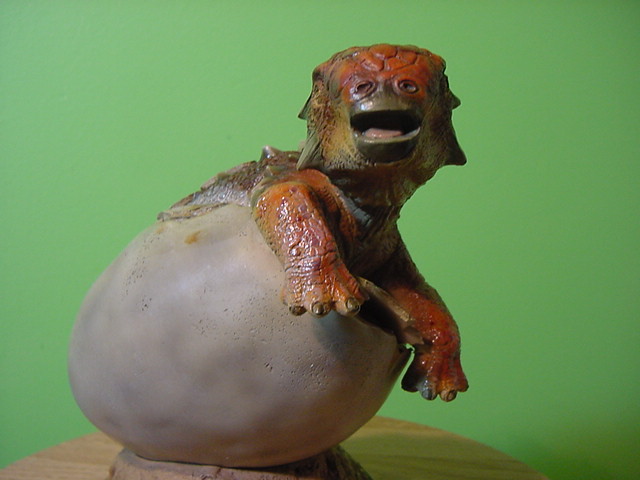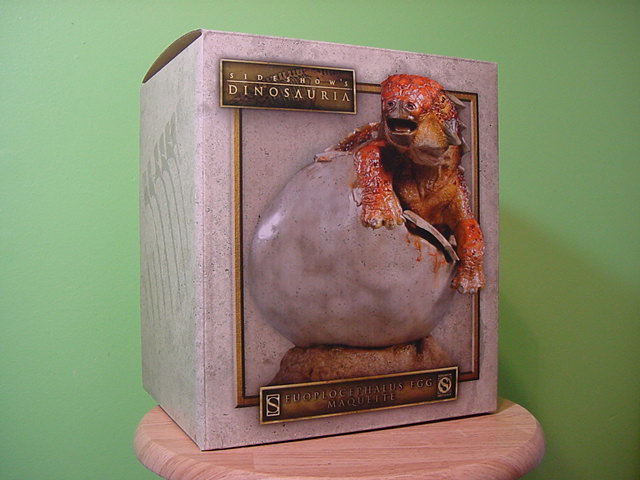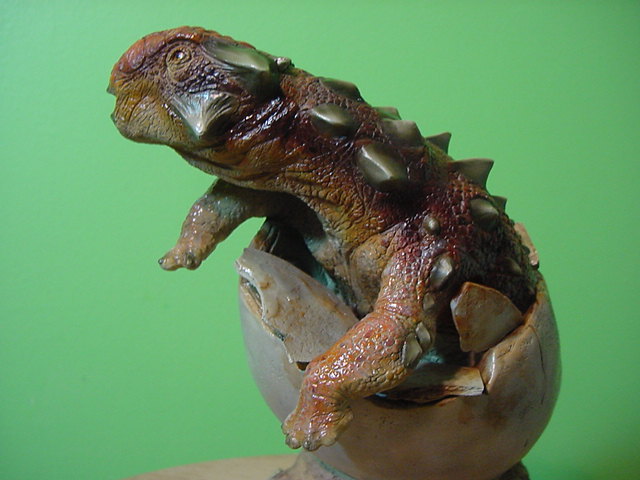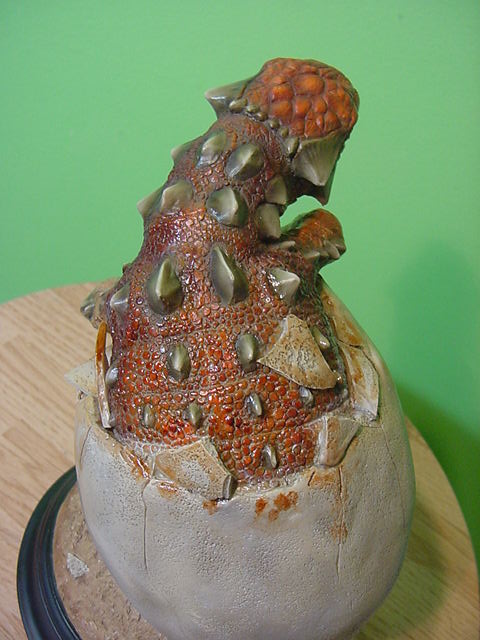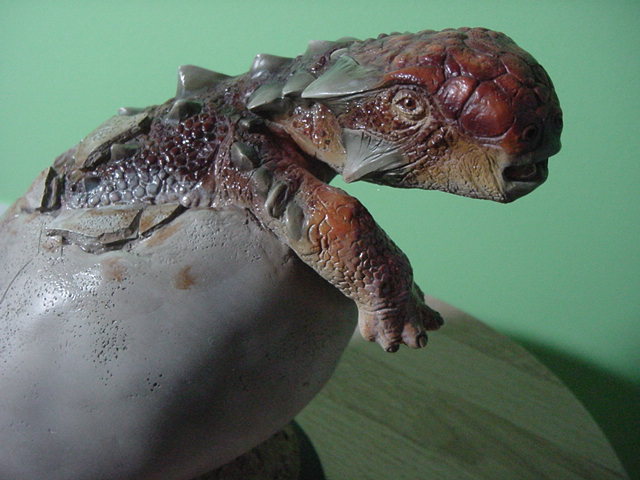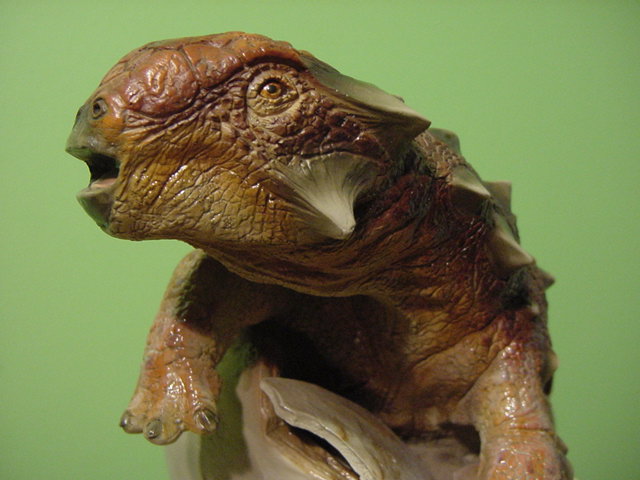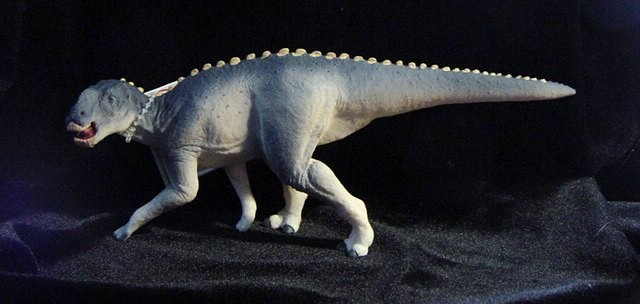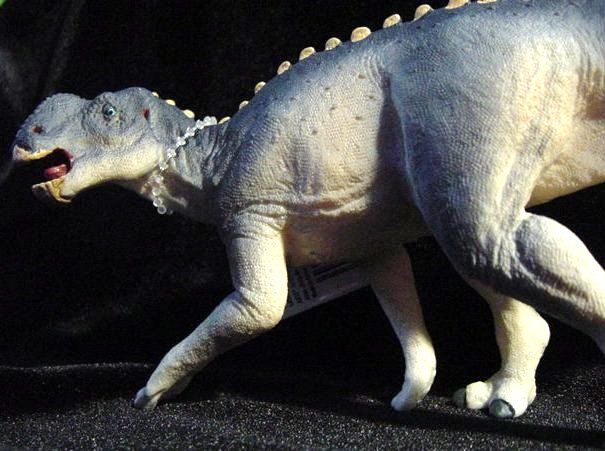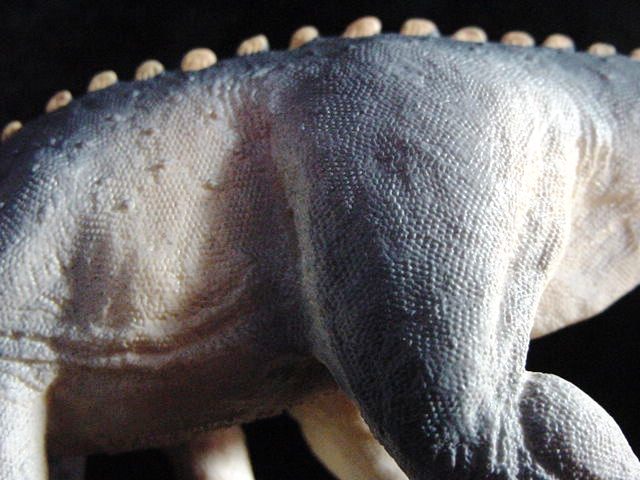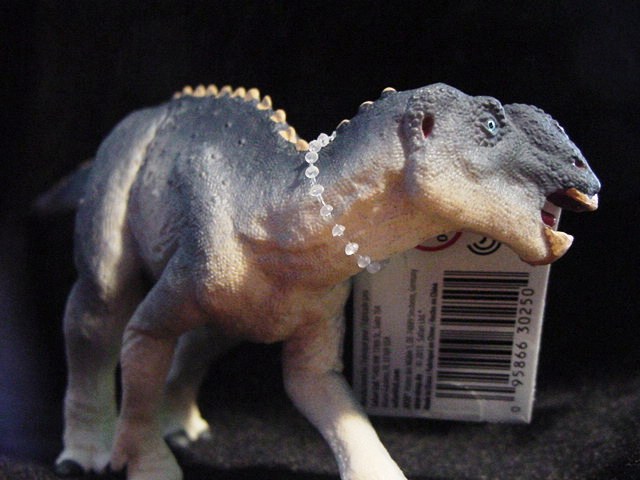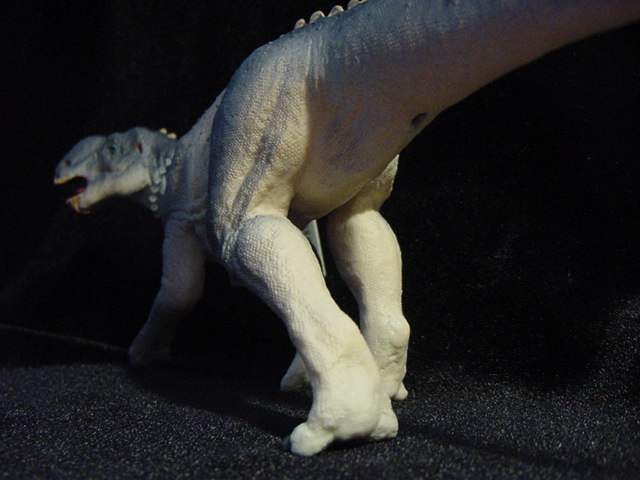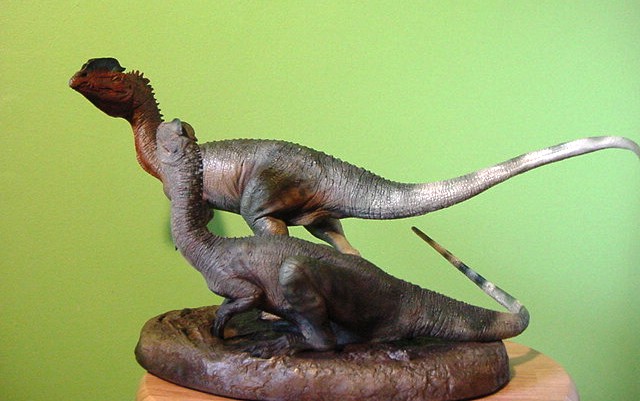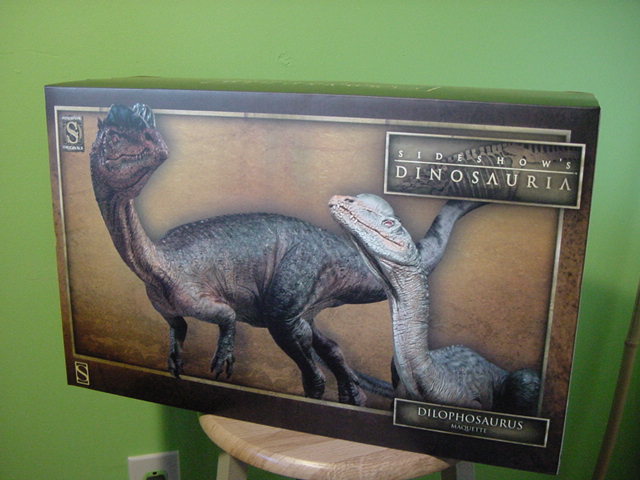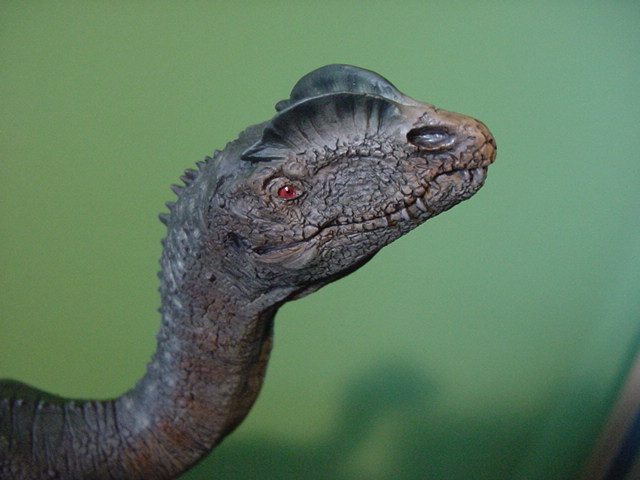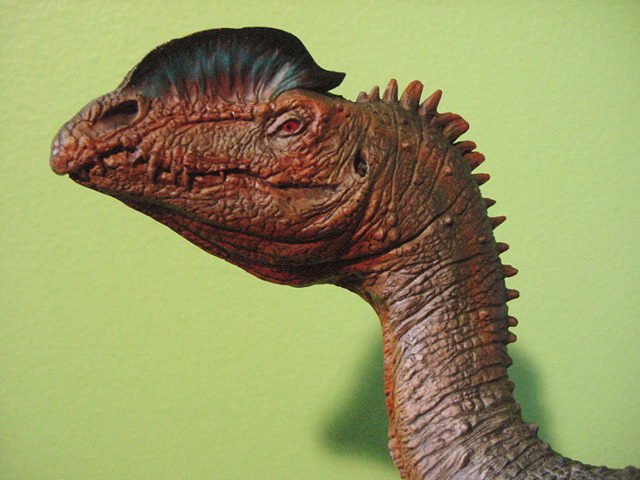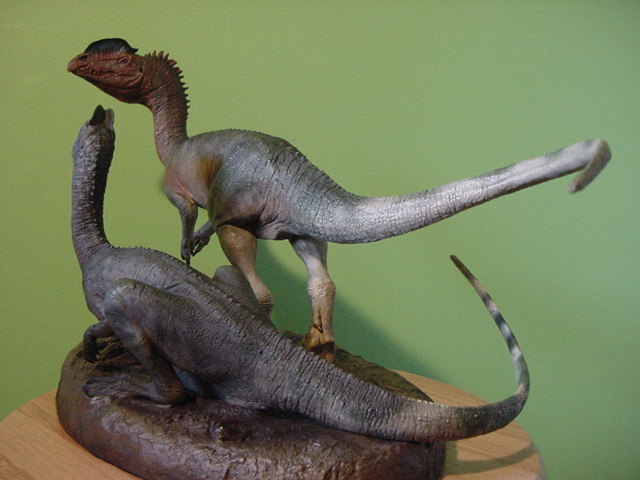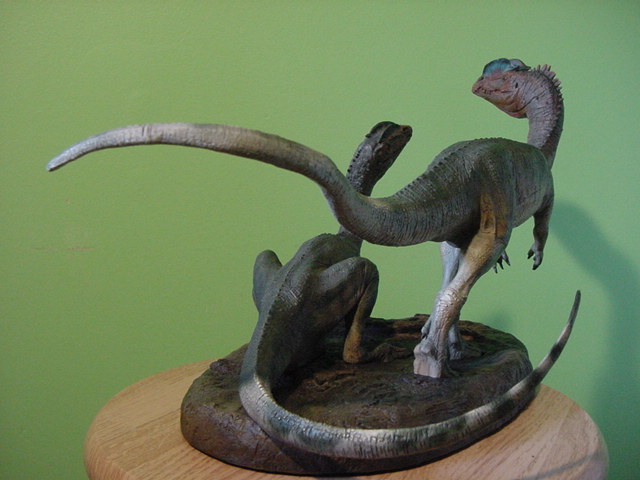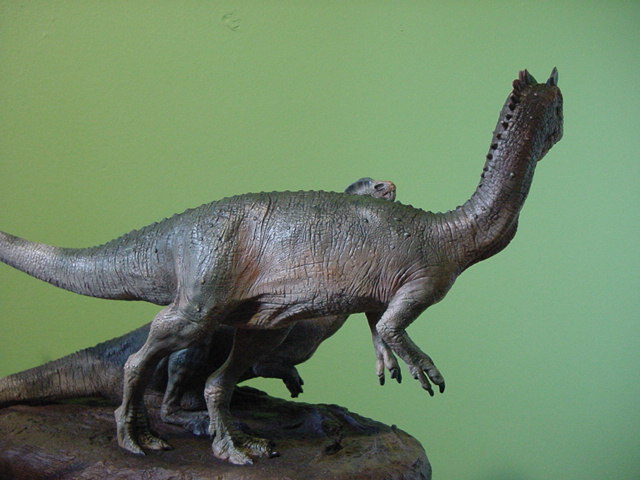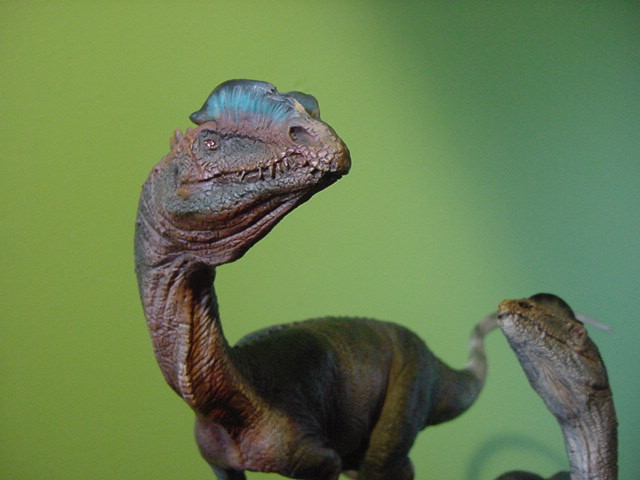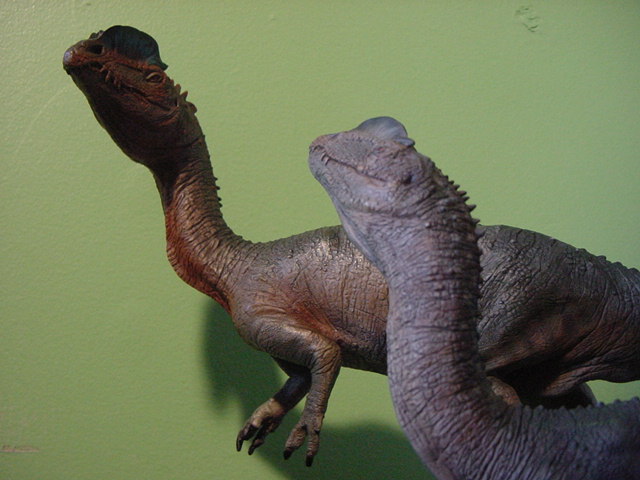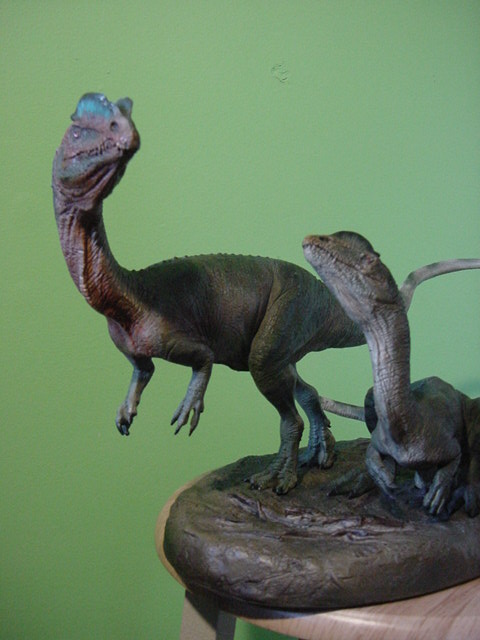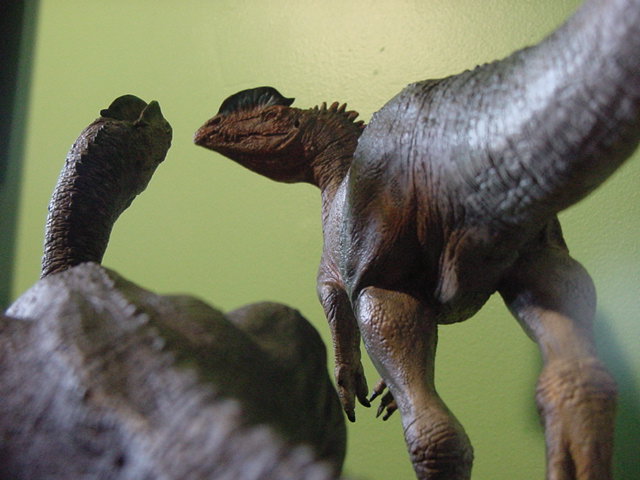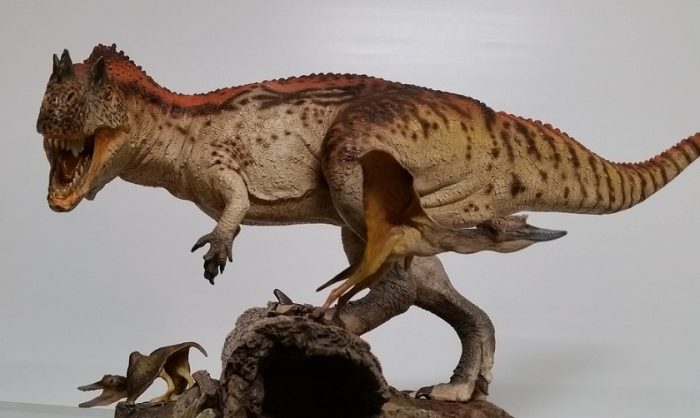Review by Dan Liebman of DansDinosaurs.com
Photos by Chris Kastner of BackyardTerrors.com
If you ask a paleontologist what the two main types of dinosaur might be, you’re likely to receive an answer containing the words “Saurichia” and “Ornithischia”. Pose this same question to a manufacturer of dinosaur models, and you may discover an altogether different dichotomy: “T. rex” and “Dinosaurs that aren’t T. rex”. It’s beyond question that this predator’s popularity far outranks any other dinosaur. The quality of a manufacturer can arguably be judged by the quality of its king, and with reliably high demand, it’s quite common to see several incarnations of Tyrannosaurus rex from a single figure manufacturer.
![sideshow_tyrantking (2)]()
With that in mind, it is not terribly shocking to find the Sideshow Dinosauria line introduced their third Tyrannosaurus model in 2015, approximately six years after the series first launched. Even if you are an avid collector, you may wonder if it’s really worth having a third statue taking up precious space in your display, and what novelty this new model might offer. In short, there are two main distinctions. The first is that it’s been beautifully crafted by longtime Dinosauria sculptor Jorge Blanco, who has created more models in the series than any other artist thus far. The second reason? It’s huge.
![Manufacturer stock photo featuring original painted prototype]()
Manufacturer stock photo featuring original painted prototype
![Stock photo, alternate angle]()
Stock photo, alternate angle
When I say huge, I mean just that. At thirty inches in length, this titan reaches the generous 1:15 scale often associated with the Foulkes lineup. This makes it noticeably larger than the previous two tyrannosaurs in the series, and likely more menacing than most of the little vinyl versions you’ve picked up over the years. Serial numbers are boring, so Sideshow has distinguished this Tyrannosaurus with the fitting moniker of “Tyrant King”. In its original box and packaging, this giant weighs a whopping 22 pounds, but is still quite manageable once unpacked. The Dinosauria models are often partly hollow, but the base does have a good bit of heft.
![sideshow_tyrantking (5)]()
Those anxious about stability in their theropod models need not worry. While past statues sometimes attached to the base with a single sturdy peg, this one features peg insertion for each foot, safely rooting the creature in its massive footprints. The terrain is plain and mud-like, with a scattered rocks and a log to provide some scale. As is sometimes the case with these models, the base could probably do with a stronger paint application, even just a bit of rotten foliage. It’s entirely possible I’ve just been spoiled by the sight of so many buildups from Martin Garratt. Much like the reissued and repainted versions of previous Dinosauria statues that have arrived this year, the base has a secondary layer underneath, which makes it bigger and heavier. This seems to be an attempt to bring a consistent motif to the series, though I suspect many collectors would have gladly forgone this feature in favor of a slightly lower price tag.
![Outdoor image, indirect sunlight]()
Outdoor image, indirect sunlight
But of course, you want to know more about the fearsome predator itself. In addition to a high level of scientific accuracy, Jorge Blanco is known for reconstructing these giants with a primal robustness. This is a considerable contrast to the leaner, more “shrink wrapped” reconstructions of the nineties, and definitely distinct from the pot-bellied predators that came before. Here is a creature laden with an extraordinarily impressive musculature. While gracile tyrannosaurs certainly did exist, our contemporary king is a very heavily built animal. This is especially pronounced in the big, meaty thighs and powerful caudofemoralis, where Blanco once again demonstrates his expertise. There is the barest protrusion of bone at a few points in the body, such as the center of the thigh and the scapula, just enough to remind you of the sturdy framework that supports such a large animal.
![Indoor image, with photo flash]()
Indoor image, with photo flash
The lowered head of the animal adds to the aggressive posture, and feels far more naturalistic than the stereotyped “victory roar” pose better suited to a summer blockbuster than a nature documentary. Whereas many reconstructions show the skull fenestrae, nothing of the sort is found here. The skull’s dorsal surface is appropriately outfitted with an array of bosses, including some slight angularity at the brow, for that classic “angry” look that people have come to expect. The large, forward-facing nostrils are quickly becoming a standard feature, one that befits an animal that depended on its acute olfactory sense. A nice long scar adorns the right side of the maxilla. No pristine white chompers will be found in the jaw of this reconstruction. Instead, there are rows of disposable weapons that show signs of wear and decay. For me, the real icing on the cake is around the glistening gum line, where the skin seems to recede in a grotesque and believable fashion. Lean in close enough, and you can practically smell the rotting stench of death emanating from the jaws. Or it might just be paint, in which case, please don’t sniff it.
![Original prototype (left) and mass produced model (right). Not quite identical, but still impressive.]()
Original prototype (left) and mass produced model (right). Not quite identical, but still impressive.
Paint has become something of a controversy when it comes to Sideshow models. Prototype sculpts are given detailed, professional paint jobs for the manufacturer’s stock photos, which can sometimes lead to disappointment once the mass produced statue is seen in person. To their credit, Sideshow seems to have been stepping up their game in this respect, and the recent reissuing of many of their original pieces in more vibrant color schemes suggests they are trying to do better. In its coloration, the new Rex looks similar to the subadult that was featured in the premiere Dinosauria statue, sculpted by Adrian Taboada. The shadowy browns and stony greys feel appropriate for large predator, watching silently in the darkness of the undergrowth. Instead of crimson demon eyes staring at us, we have simple but effective golden eyes, rather like those of a Carnegie model. There is a wavy pattern if you look carefully at the tail, but for the most part, this is a very conservative coloration for this species. It is possible the paint scheme was intentionally simplified in order to reduce the chances of a botched final product after passing through the factory, but either way, collectors have responded positively to it. Personally, I would have liked something a bit bolder, yet I must admit I would not want to risk an unsightly paint job on such a crucial character.
![1:15 Sideshow Tyrannosaurus with 1:10 NECA Alien Queen - Because why not?]()
1:15 Sideshow Tyrannosaurus with 1:10 NECA Alien Queen – Because why not?
As I’ve mentioned in the past, the real attraction of a Dinosauria statue is the simple fact that it’s a beautiful sculpt from a world class paleoartist. Many collectors are not aware of the existence of resin kits, and those that are may simply find them beyond their financial reach after hiring an artist to finish it. This makes the Dinosauria statue a great intermediate choice for a serious collector who wants to elevate their collection from the vinyl figures. If there is anything that can entice a collector to try new things, it’s a big bad T. rex.
![sideshow_tyrantking (3)]()
![Preproduction concept art by Jorge Blanco - Thanks Jorge!]()
Preproduction concept art by Jorge Blanco – Thanks Jorge!
“Every time Sideshow asks me for a new sculpture for the Dinosauria series, it´s a thrill. Especially in the case of the T. rex, since there are two great versions: Taboada´s and Krentz’s. So, I wanted to give my own interpretation of the King focusing on the features of a bold and aggressive big male. I don´t believe the T. rex is just a pretty face (far from that), so I dedicated hard work to other features like feet, arms, weight, underlying fat, skin, and the way all these factors make an impression on the base. I want to thank the team for their support, which I find essential to accomplish my own vision of any given animal.”
– Jorge Blanco, Sculptor
Available to order here.
Tyrannosaurus “Tyrant King” (Sideshow Dinosauria) is a post from The Dinosaur Toy Blog
